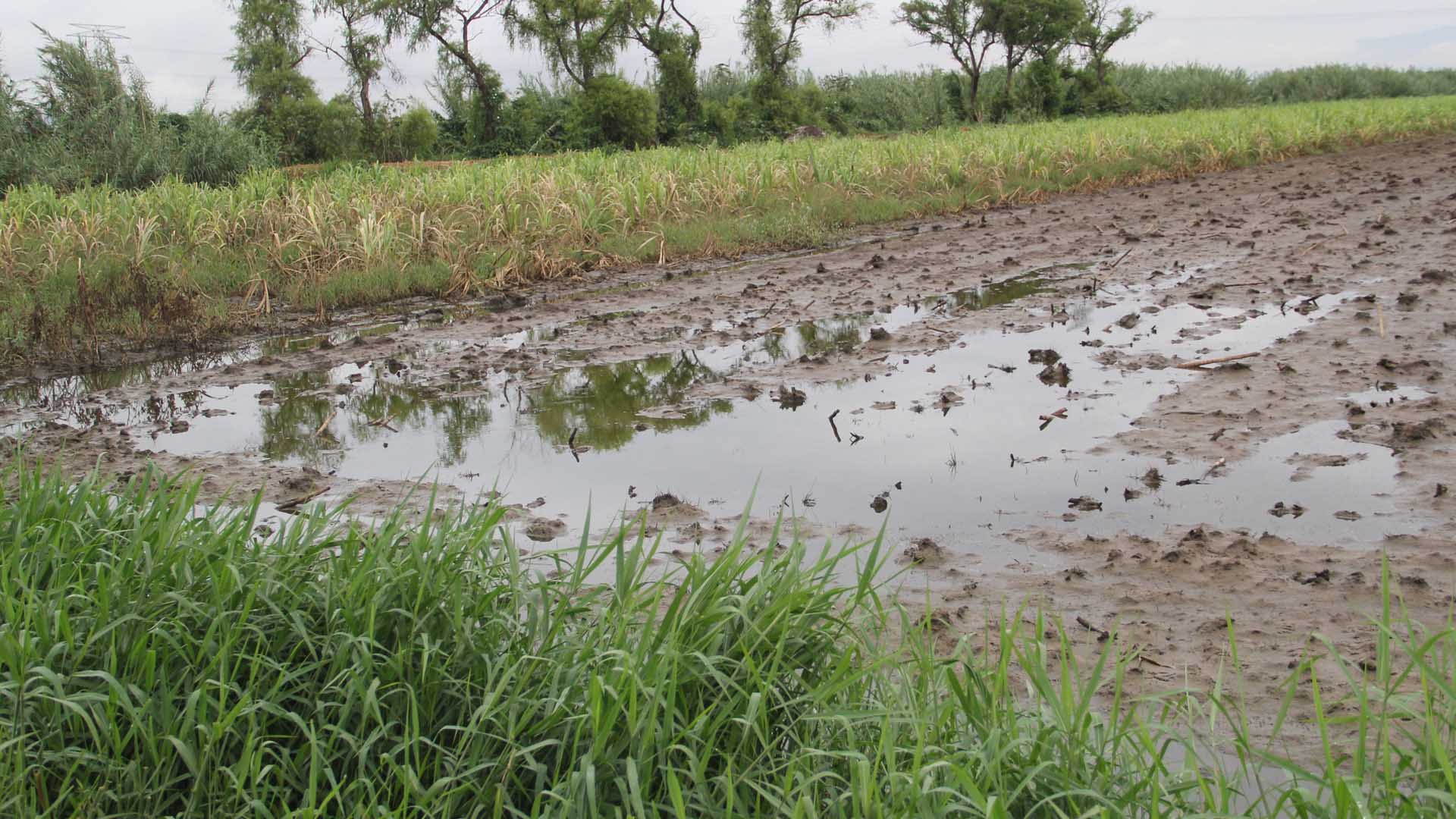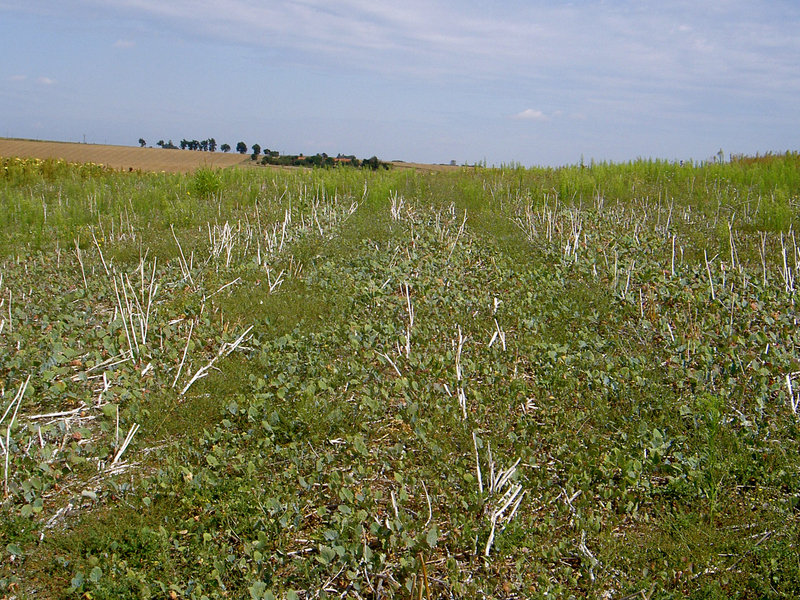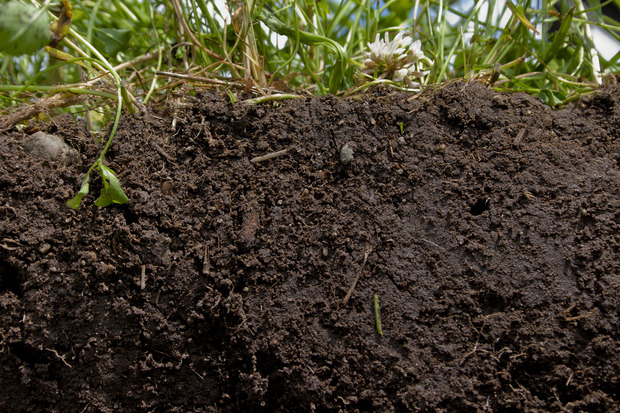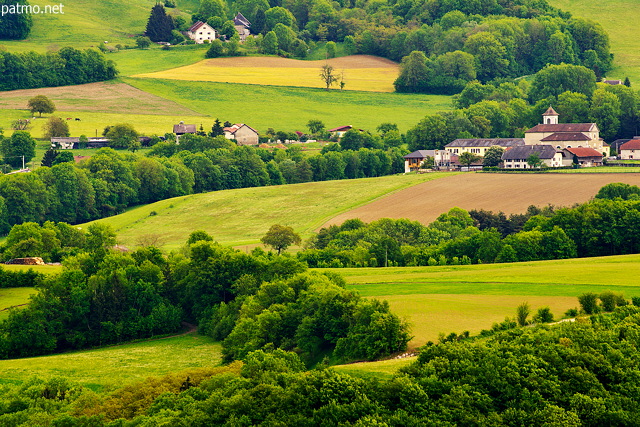THE SOIL -6- THERE IS STRENGTH IN
UNITY
A few days
ago, the Facebook page "Sols Vivant - Québec" (French page, very
recommendable for those who are interested in the reciprocal influences of soil
life and agricultural production), published a very interesting article about
the scientist Christine Jones and her work on diversity on and in soils.
This
article, dated February 18, 2019 and published in the independent newspaper La
Junta Tribune-Democrat, State of Colorado, highlights some points about which
little is said, but which could be essential for the future of sustainable and
productive agriculture, and for the fight against global warming.
Personal
picture
Christine
Jones explains that water vapor is the main greenhouse gas. She is not the
first to talk about it, but curiously, the public debate has focused on CO2,
while water vapor is actually much more important.
Then she
talks about diversity as a source of vital power for soil and of fertility for
crops.
This is
something that has never been discussed, but which may give an interesting
trail of experimentation and work for all farmers and researchers who, in one
way or another, try to avoid or reduce plowing and increase biodiversity on
their farms.
We can
summarize his message with this sentence
"Our soils today are not
deficient in minerals, they are deficient in microbes"
As
usual, I publish the article in its entirety. However, here I removed a short
part announcing a conference that Christine Jones will be attending a few days
later. At the date of publication of this blog post, the conference is over. So
I delete this part so that it does not interfere with reading. But you can
access it by the link to the original article.
Soil
ecologist challenges mainstream thinking on climate change
By Candace Krebs / for Ag Journal
How cropland and pastures are
managed is the most effective way to remedy climate change, an approach that
isn’t getting the attention it deserves, according to a leading soil ecologist
from Australia who speaks around the world on soil health.
“Water that sits on top of the
ground will evaporate. Water vapor, caused by water that evaporates because it
hasn’t infiltrated, is the greenhouse gas that has increased to the greatest
extent since the Industrial Revolution,” said Christine Jones, while speaking
at the No Till on the Plains Conference in Wichita in late January.
“It’s a scientific fact that water
vapor accounts for 95 percent of the greenhouse effect, whereas at most 3
percent of the carbon dioxide is a result of burning fossil fuels, and carbon
dioxide only makes up 0.04 percent of the atmosphere anyway,” she continued.
“So how can a trace gas be changing the global climate?”
That’s a crucial detail the
mainstream media and much of the general public have largely missed, in her
view.
“It’s got nothing to do with if you
burn coal or not,” she stated emphatically.
Jones has a doctorate in soil
biochemistry and worked in public research and extension before becoming a soil
health consultant on the world stage.
She promotes keeping the soil
covered at all times with diverse plant communities while dramatically reducing
dependence on fungicides, pesticides and artificial fertilizers. The answer to
healthy working landscapes is not more inputs, or even more rainfall, she
contends, it’s understanding and capitalizing on the benefits of diverse
mixtures of plants working together to draw carbon out of the atmosphere and
back down into the soil.
[…]
The one principle Jones can’t
emphasize enough in her talks is the power of diversity.
She calls for more diversity in the
human diet — contending that humans need to eat at least 30 different plant
foods every week for a properly functioning gut biome — more diversity in livestock
diets, citing the work of Fred Provenza, a professor emeritus at Utah State
University who has done extensive research on animal consumption patterns and,
finally, diverse landscapes that mirror the complexity of the ancient prairie,
which once contained upwards of 700 different grass and non-grass species
within each small patch of earth.
To explain why plant diversity is
so important, she uses a term that might be new to a lot of farmers: “quorum
sensing.”
Soil microbes can sense when plant
numbers hit a community tipping point, she said while speaking in Wichita.
“A quorum in an organization is
that threshold that needs to be present in order to make decisions and conduct
business,” she said. “What we now know about microbial populations is that they
also have to meet a threshold in order to achieve “density dependent
coordinated behavior.” When that happens, they are working together as a
super-organism, capable of tolerating drought, or low nutrient soils, or any of
those sorts of things.”
She pointed to research done in
Germany that showed having diverse plants growing together boosted biomass
production more than adding 200 pounds of nitrogen per acre to straight
monoculture crops. In other experiments, mixed plant cultures were able to thrive
on an inch of water, while strips of monocultures showed severe drought stress.
“What is happening here goes beyond
the simple idea of complementarity, wherein each plant is filling a different
niche,” she said.
Diverse mixes increase
photosynthesis, which in turn leads to more soil carbon deposition, she
explained.
“It makes you wonder why we worry
so much about weeds,” she quipped.
The benefits of increased
biodiversity hold true for both farmland and pasture, she added.
While some individual plants
benefit more from diversity than others, the overall impact of complex
interdependent networks of roots and soil microbes is what transforms the
function of the landscape as a whole. It all comes back to enhancing the
capacity to sequester carbon, she said.
Soil carbon, she has long
maintained, is essential for plants to take full advantage of nutrients like
nitrogen, something that modern agriculture has tended to overlook.
“Our soils today are not deficient
in minerals, they are deficient in microbes,” she said.
Sufficient carbon is also necessary
for the full expression of a plant’s genetic potential.
“In the plant world, genetic
selection can take you a certain way down the track, but if you do something
about the health of your soil you can make quantum leaps in a much shorter
amount of time,” she said.
Evidence of healthy soil includes a
rich, dark color, high organic matter, an aggregated structure and complex
networks of filaments colonizing around plant roots, which enable increased
absorption of water and nutrients.
“You should never be able to see
exposed roots on a plant,” Jones said. “If you can see the roots on the plant
they are not communicating properly with the soil.”
All of these qualities indicate
increased carbon sequestration at work.
Jones concludes that changes in
farming practices over the last century have done more to impact the global
climate than is widely acknowledged. But that also means improving farming
practices holds vast potential to change the climate for the better.
“The increasing temperature, the
increasing aridity, has come about through inappropriate land management,” she
said. “We have made huge changes to the landscape by simplifying it, by
removing trees and plants, and by moving from diverse plantings to fields that
now grow only one thing.”
It would be too simple to reduce
the causes of climate change by stigmatizing agriculture. However its role is
important.
But, on the one hand, it is
necessary to recognize the mistakes of the past, even if they were made without
bad intentions, and secondly to emphasize and favor the ability of agriculture
to become the main actor in the fight against global warming and the reduction
of greenhouse gases.






RépondreSupprimerDo you need a loan ? Looking for a loan for a long time get your Guarantee loan today for 2% Interest rate
Private Loan ?
Mortgage ?
Loan to Buy a property ?
Car Loan ?
Business Loan ?
Student Loan ?
Real Estate Loan ?
Loan to Pay off your debt or bills ?
Contact us by email: (inforamzanloan@gmail.com) for further procedures.